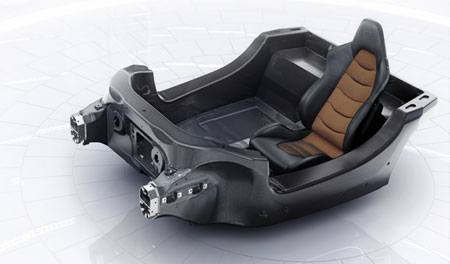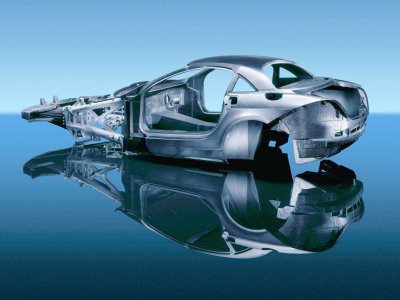marcush. wrote:the future is in the past...for decades the buzzword was aerodynamics..not a mention of weight ...until a Golf had reached 1200kilo curb weight thats a cool 505 increase from where the Golf started...thats development at its best...


then we had the Airbag and safety hype ,very good thinking to carry 15 kilos of pyrotechnics in all cars to help save the life of those who actually get involved into an accident where the bag is actually needed.
On a sidenote ,just look beneath the cover of a current passenger car seat or the
hard plastic mouldings of the passenger compartment...i bet if you start the design of components under the aspect of avoiding them doing harm to the passengers you could possibly do away with a lot of these questionable inventions.
light cars... you do not even need a reverse gear for this..

:
http://www.stefan-arold.de/pics-fifties ... ittger.jpg
A Golf may have grown 500 kg over the years, but it have also grown a size. So a modern Golf is more of the size that a Passat used to be, and a modern BMW 1-series is about as large, if not larger, than a BMW 3-series from 1990.
So the trend over the years have been to make each car slightly larger than its predecessor. In addition to that, the body structure have been made much stronger to increase crash safety and reduce noise and improve handling (higher stiffness), more sound insulation have been added to reduce noise, and lots of extra equipment have been added to the cars; AC, electric window openers, electric seats, stereos with double digit number of speakers and so on. All this increase weight which in turn increase weight even more since it require a more powerful drivetrain and better brakes. So essentially we get a bad cicle of weight increase were a weight increase in itself require more weight.
Mysticf1 wrote:So if you damage the monocoque in an accident, will it be repaired or thrown away?
Probably thrown away, but usually you use a subframe to absorb energy in a crash. That way you can avoid damage to the monocoque in minor accidents where the vehicle can be saved.
A Koenigsegg, the McLaren MP4/12C and the Mercedes SLR McLaren



autogyro wrote:Nah Uranium will run out long before that happens.
Of course we could use Plutonium but I am already involved with setting up mental hospitals for people with that idea.
No, it won't. There are at least 5.5M tons of uranium availible for conventional mining and the current rate of consumption is about 65000 tons a year, that's 80 years worth of uranium. However, if we add unconventional sources such as phoshates, probable conventional sources and extraction from seawater, the amounts availible are much larger.
Plutonium is already used as a fuel. Infact, there is where the plutonium from dismantled nuclear weapons end up.
WhiteBlue wrote:
I knew you as a sensible person. Whoever dreamed up plutonium for the energy sector must have been out of his effing mind.
Plutonium are already used as a fuel. However, today it's mainly the 0.7% of uranium that is U-235 that are used to power a nuclear powerplant. But if a reactor can produce more plutonium out of uranium 238, the most common isotope, than it consumes, we can get 50-100 times more energy out of a kg of uranium. Enough to be fossil free for 100,000 of years.
Also, I know there are popular myths about nuclear powerplants and nuclear weapons, but, the plutonium produced by nuclear powerplants contain too much Pu-240 to be usable as a weapons material. The fuel cycles required for power production are simply too long, and honestly, there are simpler and better ways to produce weapons plutonium. That's why all nations with nuclear weapons have produced their weapon material in military reactors.
autogyro wrote:Jersey Tom wrote:autogyro wrote:Nuclear power costs far more in cleaning up its waste than it gives in usable energy.
Prove it.
Just walk to Chernobyl my friend, to see how much of the planet is unusable because of your nuclear god.
Take a trip to East Germany and see the other nuclear power stations of the same type still there and not producing one milli amp because of that disaster.
Ask those who lived in the old Soviet Union what the main reason for its collapse was and then you are on the road to your proof.
Chernobyl used RBMK-type reactors which were a flawed design. They had a large positive void coefficient which meant they increased their power output when they overheated. The control rods also had graphite ends which meant that the reactor increased its output shortly when the emergy stop button was pressed. Due to their large physical size, the Soviets didn't use containment buildings either, just a biological shield in a common industrial building.
In the western world we have much safer reactor designs. Most of them use light water as a coolant and a moderador, meaning that they will reduce power output if they overheat. The reactor will in other words stabilize itself. The reactor is also built within a containment building, so if everything goes wrong and the fuel core melts down, the radioactive waste produced will stay inside the containment building, not be released into the atmosphere as in the Chernobyl accident. Some of the latest designs also got passive safety features, meaning that they don't rely on mechanical pumps to remain cool after shutdown, instead they rely on gravity and natural convention (thermosiphon principle).
Still, there are many Soviet built RBMK reactors still in use, infact, there were even one in EU that was shut down as little as five months ago. However, still lacking a containment building, the RBMK was modified so the thermal runaway that occured in Chernobyl, could not have happend in one of the modified reactors.
As for logic about safety, here's one for you. In terms of loss of life, nuclear power costs about as many years as wind power and compared to the approx. 1 million deaths that fossil fuels cause each year, even Chernobyl was just a small incident. There have also been accidents with hydropower that have caused 20 times, if not more, losses of lives in a single accident. Assuming about 10,000 deaths caused by Chernobyl.
As for your cleaning up the waste argument, there is no scientific basis for such a statement. Quite the opposite. Lifecycle assessments on light water reactors using centrifuge enriched uranium have concluded that the energy return on investment can be over 50:1. This is with all the steps from building the powerplant, producing the fuel and then take care of the plant aswell as the used fuel. The CO2 emissions can be less than 3 g/kWh for the same cycle, even wind power can't match that. Nor can it match the cost of electricity, wind power which is the cheapst renewable aside from hydro, is some 30-100% more expensive than nuclear and currently not possible to build on commercial grounds alone (it requires subsidies).




